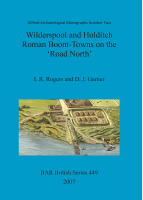Description
BOOK DESCRIPTIONThis volume is the essential outcome of several years of post-excavational endeavour. In the course of it, the understanding of the historical contexts of the Roman establishment at Wilderspool developed, broadened and changed. Most influential in this respect were - at the time - the entirely unpremeditated, and fortuitous, developer-funded excavations elsewhere on the related Roman road network in the West Midlands and North West of England. Perhaps foremost among these was the excavation of part of the settlement at Holditch, in Staffordshire, which, so it is thought, was not only similar to Wilderspool in its underlying raisons d'être, but appears also to have had a history - or fate perhaps - that seems to have been closely linked to, and to reflect, the inexorable northward movement of Roman military logistical supply of material in the Claudio/Neronian to Flavio-Trajanic periods. Furthermore, these inter-settlement links and developments all appear to relate closely, in particular, to the great Roman northward arterial system to the west of the Pennines. With its side-roads and 'tributaries', this converged on the Mersey Crossing at Warrington, and in so doing provided a direct, physical, link between the establishments at Wilderspool and Holditch. In this volume, therefore, the authors decided to present the reports on excavations at both places in a single volume, in the hope that the reader will find this beneficial; and also that this will facilitate understanding of each place and the underlying historical contexts.











